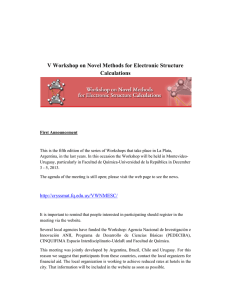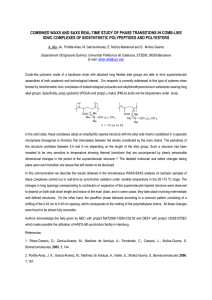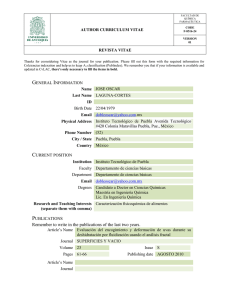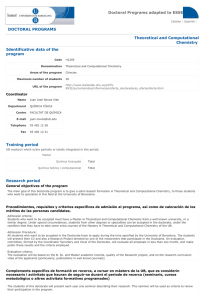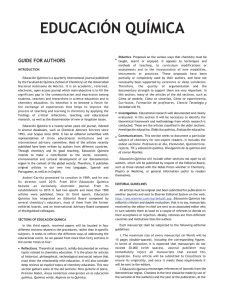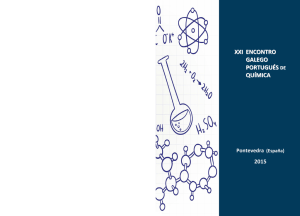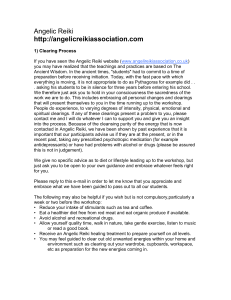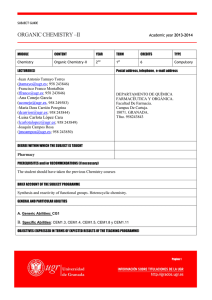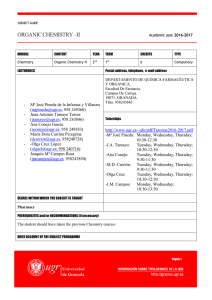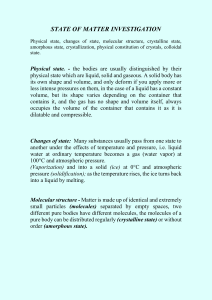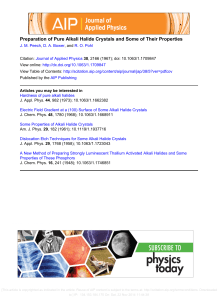Química: La Ciencia Central.
Anuncio
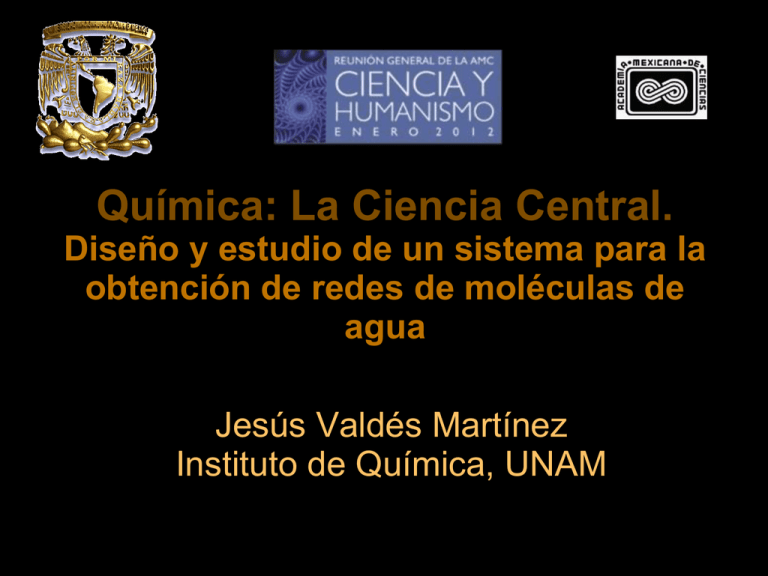
Química: La Ciencia Central. Diseño y estudio de un sistema para la obtención de redes de moléculas de agua Jesús Valdés Martínez Instituto de Química, UNAM In Memoriam: Jesús Valdés Félix (1921-2012) Química la Ciencia Central Química y Sociedad Comunicar a la sociedad lo que hacemos Comunicar como pensamos Año de Elecciones •Anafabetismo Literario Analfabetismo Científico ¿Quién es el científico mexicano más reconocido mundialmente? Su nombre comienza con M ‘chemistry beyond the molecule’ ‘lego™ chemistry’ (a) intermolecular interactions (b) applied coordination chemistry (c) a strategy of controlled organization of multiple separate components. ‘supramolecular’ the philosophies and strategies of grand assembly Crystal Engineering Crystal Engineering: The predicted design and synthesis of novel synthetic crystalline solids through knowledge of intermolecular interactions and supramolecular synthons. Design Tecton-Synthon Synthesis Self-assembly Function Properties Self-Assembly The spontaneous and reversible association of molecules or ions to form larger, more complex supramolecular entities according to the intrinsic information contained in the molecules themselves. Biological Systems: Proteins Single Molecule Self-Assembly 598 The Tobacco Mosaic Virus DNA Coordination Compounds: Supramolecular Cube ; Molecular Squares and Boxes; Metal Arrays Closed Complexes by Hydrogen Bonding : Tennis Balls and Softballs: Heterodimeric Capsules; Giant Self-Assembling Capsules ; Rosettes Catenanes and Rotaxanes Helicates and Helical Assemblies Molecular Knots Water is a very important compound with unique properties Its unique properties are related to the labile hydrogen-bonded networks it forms Present in 8% of molecular crystals •Small size •Excellent hydrogen bonding ability. Important role the solid state chemistry of API Many drug molecules are large and flexible; and contain hydrogen bond donor and acceptor groups. It is not possible at this time to design water networks. Some groups have designed organic and metal containing solid state systems, that act as hosts for water molecule networks. Infantes and Motherwell studied the water networks formed in organic molecular crystals using the CSD and developed a nomenclature Many interesting structures have being found by the serendipitous discovery of arguably new structures. Crystal structures are a unique way to study water networks under a variety of different chemical environments Davey and co-workers identified eight coordination environments of water based on the number of donors and acceptors that surround water molecules in coordination environments of water based on the number of donors and acceptors that surround water molecules in crystals Davey, R. J.; et al, R. Cryst. Growth Des. 2003, 3, 663–673 “Very similar topologies were obtained by Sarkhel andDesiraju in a study of protein-ligand complexes, indicating that the fundamental principles of water inclusion in crystals may not be greatly different in small molecule and macromolecule crystal structures” Sarkhel, S.; Desiraju, G. R. Proteins 2004, 54, 247–259. O O HO OH HO OH O O CrystEngComm, 2008. 10 (1) 86-94 Terpy-PTCA-1 Water Network Terpy-PTCA-2 Cu-dien-PTCA Water Networks Cu-pmdien-ptca 7H2O , 6H2O, 5H2O 7H2O 6H2O 5H2O O O HO OH HO OH O O Crystals may be used to study water network processes
